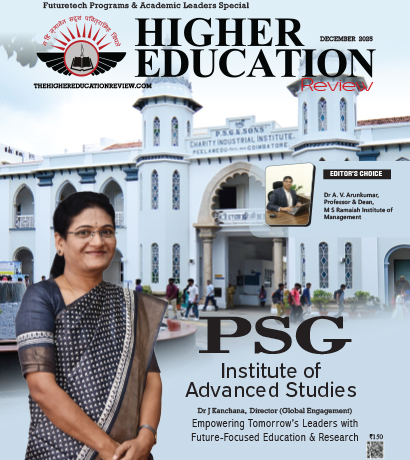Innovation in Technology-Enabled Education
 Education globally faces the challenge of bridging the gap between employment and education. As such few pertinent questions which do arise in our mind:
Education globally faces the challenge of bridging the gap between employment and education. As such few pertinent questions which do arise in our mind:
1. How will India realize its demographic dividend by skilling its young population?
2. How can current learning models adapt in a world of exciting new education technology?
3. How to innovate and bring change in the ongoing education system?
With technology entwined in almost every part of our lives, it only makes sense to use ICT and mobile technology right from the classroom. However, the current world is evolving more rapidly than the capacity of any existing education system. The challenge of learning is getting even harder for the next generations. Perhaps, flexible process models will be able to face the changes compared to fixed-style models. This leads us to another question:
• What is the most important skill to teach our kids in schools?
• Answer: Build creative and innovative minds that can adapt and face future challenges.
Governments adopt policies such as free basic education and mid-day meals at schools for a large base of students to allow and attract the under-privileged to learn. These policies have a wide range of standards, quality and infrastructure and therefore, a focused strategy on the essential skills such as the following should be implemented:
a) Creative thinking
b) Find innovative solutions
c) Ability to evaluate current status and find better alternatives
To achieve the above, we need to apply creative and innovative strategies in education with focus on the basic kid’s education. While education systems are varying in their capability to implement creative teaching methods and curricula, a teacher can easily adapt his/her teaching methods towards more creative thinking. Few tips are listed below:
i) Encourage children to find answers – The Pestalozzi method.
ii) Children learn, teachers observe - The Montessori Method
iii) Focus on concept
iv) Use design thinking tools and methods
v) Approach to innovation
Students have to identify two directions for innovation, Problem-to-Solution and Solution-to-Problem. The first model drives the students to identify and find solutions for existing problems. The second method is to find a solution for a problem that does not exist yet. The two directions aim to help students to think of the problem with different perspectives.
While most traditional curricula focus on moving from one lesson to another, a rumination process linking new lessons with previously taught knowledge and experiences can be applied. This linkage process help students think critically and evaluate problems to reach innovative solutions. Promoting creativity and incentivizing innovations through educational institutions is the first step towards broadening and deepening the impact of innovations in our society. In large scale education systems such as ours, catering to a vast population with relatively limited resources is a major challenge. Concurrently, rapid advances in technologies, changing economy, environmental challenges, the sector itself presents a fertile ground for pioneering innovations. Recognizing the fundamental role of education in nurturing and fostering an ecosystem of innovation is the need of the hour.
I) Failure in implementation
Innovation in education is a highly contentious issue. The core of the dispute is not about the actual amount of change and innovation in education, but the process - how change and innovation would happen. Many well-intentioned innovations fail not because of the lack of quality or because their intended direction of change is wrong, but because of how the implementation process. Lack of trust and ownership, poor evidence base, and lack of empowerment of the key factors seem to be the main ingredients for failure in changing education. We need to know and understand more about how the governance of education systems has changed. Many attempts to bring about innovative change in education through decentralization, greater complexity, multiplication of stakeholders, broader dispersion of knowledge and expertise, more levels of decision-making, all make education systems more difficult to steer and change.
II) Technology- an enabler
Access to online facts and research is increasing the risk of students graduating without foundational knowledge in a subject. We are living in a knowledge-based society where technology acts as an enabler and a tool for empowerment. The biggest challenge today is the creation of more open resources for a better learning. While many institutions both nationally and globally have already created courses for students, we have to find ways to create more open sources for students. Corporate houses should include and investing time and effort to promote ICT and its benefits to enhance and rollout Learning Solutions maybe as a part of CSR.
Innovation and creativity are part of the essential skills that enable students to meet with future challenges and market competitions. While current educational systems do not provide the necessary creativity and innovation strategies, educators can implement a number of techniques, which suits the existing educational system, to help students think creatively and find innovative solutions for existing and future problems. Technology has changed the dynamics of the entire teaching and learning process in the classroom and beyond. And only technology can bridge the distance and bring education to the student’s doorstep.

